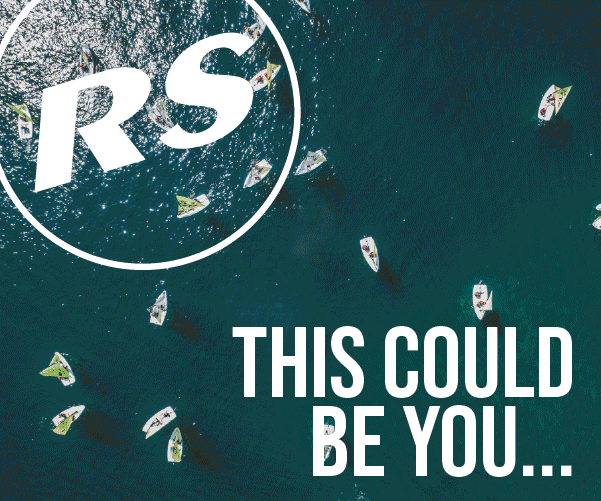
Europe is a hotspot for ocean microplastics
by The Ocean Race 28 Nov 02:10 PST

Ocean microplastic concentrations from water samples gathered by sailors during The Ocean Race 2022-23 © The Ocean Race


According to new data obtained by sailors and teams participating in The Ocean Race, three of the top five global hotspots for marine microplastic pollution are located in Europe.
Throughout the previous year’s global sailing competition, water samples were taken from the Atlantic Ocean, southern Indian and Pacific Oceans, the Southern Ocean, and seas around Europe. Every sample collected during the 60,000km Race contained microplastics, with high concentrations identified in some of the most secluded areas of the planet, thousands of kilometers away from land.
Utilizing advanced sampling and analysis techniques allowed scientists to detect microplastics as small as 0.03 millimeters—ten times smaller than what traditional methods can identify. This thorough examination revealed a significant presence of microplastics: an average of 4,789 per cubic meter of water. The highest concentration (26,334) was recorded near South Africa, followed by the English Channel near Brest, France (17,184), another site near South Africa (14,976), then the Balearic Sea (14,970) and the North Sea off Denmark (14,457). The microplastics collected ranged from 0.03 millimeters to 4.6 millimeters in size.
In addition to offering valuable insights into the spread of marine plastic pollution, the samples were analyzed to trace the original type of plastic product. Researchers from the National Oceanography Centre (UK) and the University of Rhode Island (USA) found that, on average, 71% of the microplastics in these samples were microfibers. The report states these fibers, originating from materials like polyester, are released into the environment via washing machines (through wastewater), dryers (into the atmosphere), shedding from clothing, degradation of textiles discarded in the environment, and from abandoned fishing gear.
This overview of the microplastic situation in the ocean is being shared during a week of crucial meetings concerning the plastic pollution crisis. During the Intergovernmental Negotiating Committee in the Republic of Korea, representatives from UN member states are convening to formulate international regulations concerning plastic waste.
Victoria Fulfer, a researcher from the University of Rhode Island, currently a Microplastics Scientist at the 5 Gyres Institute, stated: “These findings signify a crucial advancement in global ocean microplastic research. For the first time, we can measure particles as small as 0.03 millimeters and not only assess their prevalence but also identify the products they originate from.
“We were astounded to find such high microplastic counts. There is still limited knowledge regarding these minute particles, but smaller microplastics may pose greater risks to marine organisms and human health, as they can infiltrate cells and tissues. Global sampling initiatives, such as those executed during The Ocean Race, are essential for refining worldwide models of microplastic pollution distribution and identifying new pollution hotspots.”
Data collected during The Ocean Race 2022-23 was gathered by two 60-foot foiling International Monohull Open Class Association (IMOCA) sailing vessels (GUYOT environnement – Team Europe and Team Holcim – PRB), employing an onboard Sampling Unit: a specialized filter system designed to capture plastic particles ranging from 0.03mm to 5mm. The unit operates by drawing in water and filtering it over a two-hour timeframe to trap the microplastics. Sailors collected new samples daily, which were sent to the National Oceanography Centre for analysis with support from the University of Rhode Island.
Richard Brisius, Race Chairman for The Ocean Race, remarked: “As sailors, we have long shared our experiences of witnessing an increasing amount of plastic waste in remote regions. Now, through our scientific program, we possess data to corroborate these observations.
“There is no doubt that ocean plastic is causing immense damage. Microplastics have been detected in species throughout the ocean, from plankton to whales, and we are ingesting them through our food. If immediate action is not pursued by the Intergovernmental Negotiating Committee this week, global plastic waste could escalate nearly threefold, potentially reaching around 1.2 billion tons by 2060. We can reverse this trend, but we must act promptly.”
The National Oceanography Centre (UK) serves as a Scientific Collaborator of The Ocean Race, underscoring both organizations’ commitment to leveraging the Race’s platform for advancing ocean science.
The Ocean Race is also contributing scientific data to the Ocean Decade Odyssey project, which is recognized as an endorsed Project of the UN Decade of Ocean Science for Sustainable Development (2021-2030) that supports efforts to reverse the decline in ocean health and enhance sustainable conditions for ocean development.
Sources
1 Data was gathered during the 60,000km Race route. This edition did not include Asia, and data were not collected during leg 1 (Alicante to Cape Verde). For leg 2 (Cape Verde to South Africa), microplastic data was collected for particles exceeding 0.1 millimeters.
2 Intergovernmental Negotiating Committee on Plastic Pollution | UNEP – UN Environment Programme
Funded by the EU-MINKE project Metrology for Integrated Marine Management and Knowledge-Transfer Network. Grant agreement ID: 101008724; facilitating the analysis of microplastics data at NOC.


